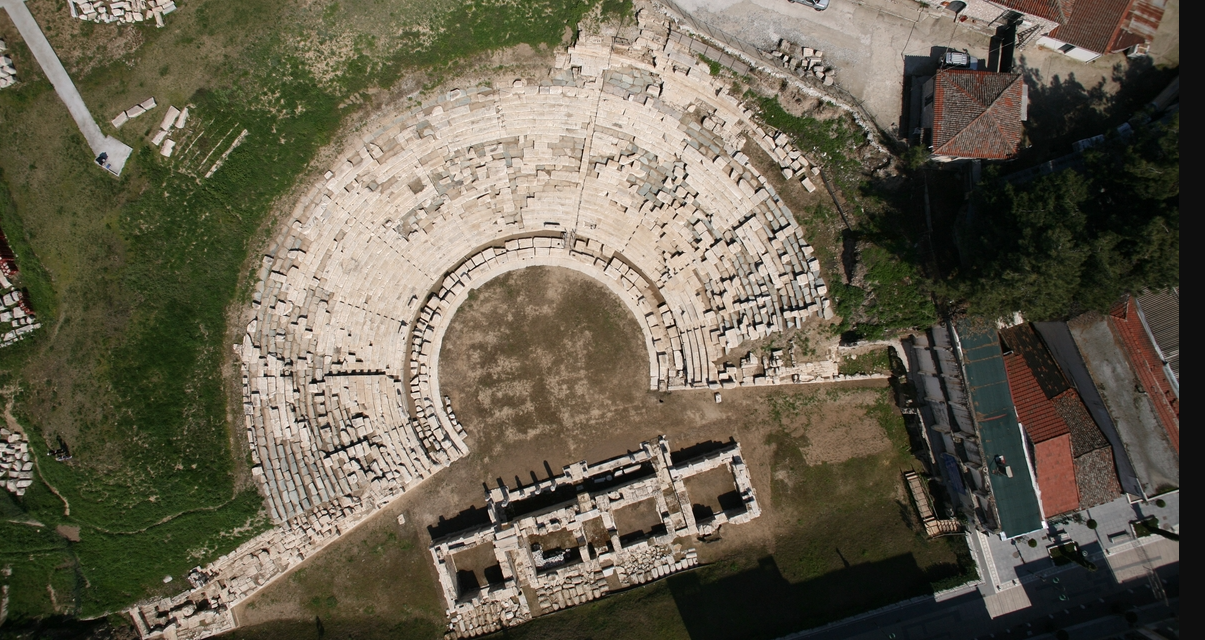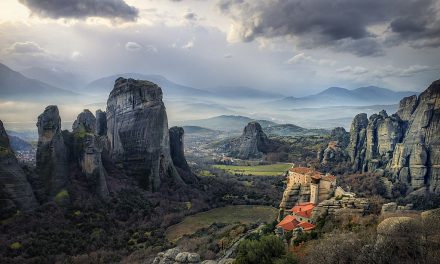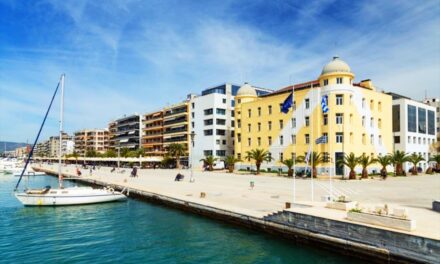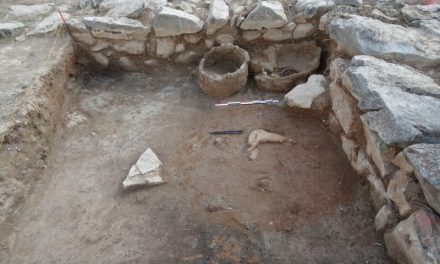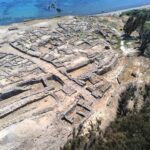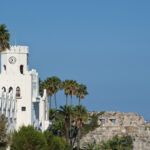“The Ancient Theater of Larissa is finally given back to the citizens, decades after the restoration work began, ready to be part of the city’s life.” With these words, Minister of Culture Lina Mendoni handed over the newly restored monument to the citizens of Larissa in September 2023, after more than 20 centuries.
The Hellenistic theater’s systematic maintenance and restoration began in 2002, with the aim of restoring it to the state it was in the Roman era. In the last four years, works had become more intensive, resulting in the complete restoration of the theater’s cavea (audience seating area). The works are expected to be fully completed by early 2024, making the theater accessible to people with disabilities.
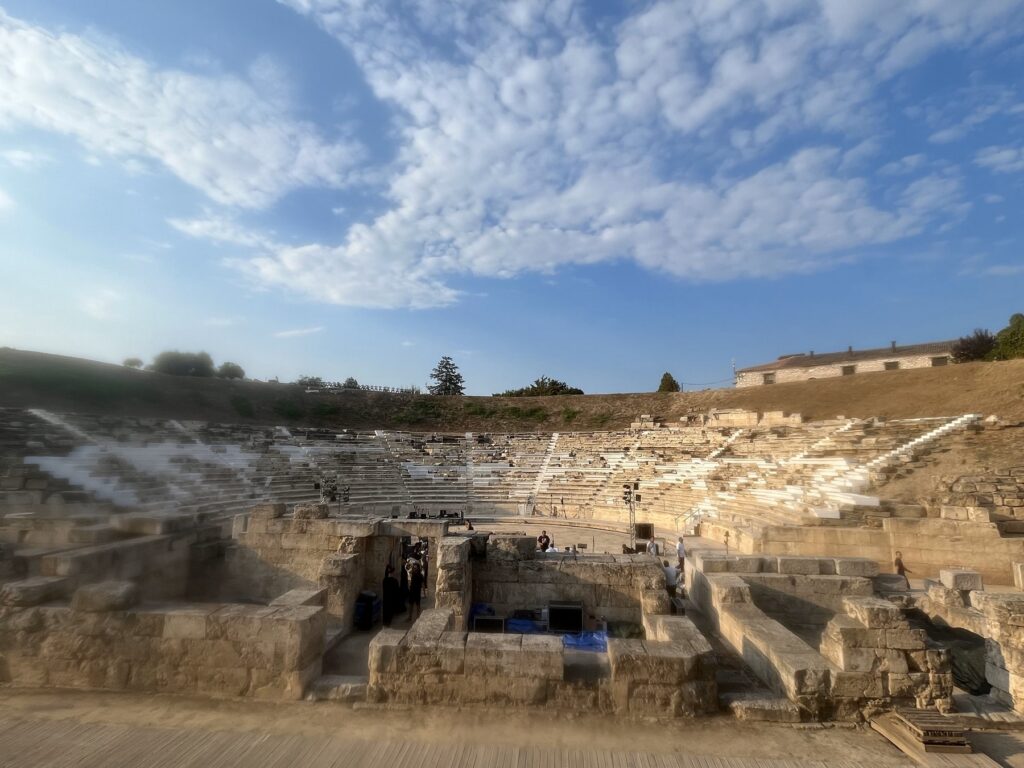
The Theater
The first Theater of Larissa, an imposing construction which could hold over 10,000 spectators, was built in the first half of the 3rd century B.C. on the southern slopes of Frourio (“Fortress”) Hill, where the city’s fortified acropolis was. It functioned until either the late 3rd century or the early 4th century AD; in the late 2nd or early 3rd century AD, an earthquake destroyed the second floor of the stage, part of the Doric facade, and part of the upper theater. A second powerful earthquake in the 7th century AD ruined the theater almost completely.
It was oriented southward toward the ancient market, which, according to reliable archaeological evidence, was located in the center of the modern-day city, where the Central Square and the Post Office Square now lie.
The monument has the typical structure of Hellenistic theaters, with their three main parts: cavea – orchestra – stage. The cavea is divided by ten radial stairways into eleven cunei, each with twenty-five rows of marble seats, the front row of which was reserved for the dignitaries.

The construction of the Ancient Theater is directly related to the worship of the god Dionysus and the performance of ancient drama. It was also the center of the social life of the ancient citizens of Larissa. This is evidenced by a multitude of artifacts, mainly inscriptions and sculptures, discovered during excavations. In the first century BC the theater was transformed by the Romans into an arena that hosted exclusively gladiatorial contests and public spectacles such as animal hunts etc.
The stage is the best preserved part of the monument. It is essentially a majestic freestanding building consisting of four rooms with three entrances between them, with a total length of 37.50 meters and a height of 3.00 meters. The two central rooms, communicating with each other, served as dressing rooms for the actors, while the two vestibules that have an entrance on the south side functioned as storerooms.

When the ancient theater was transformed into an arena by the Romans, the citizens of Larissa built a second, more modest theater for dramatic performances and other group events. This is attested to by ancient inscriptions according to which, during Roman times, the great Panthessalian (of all the region of Thessaly) festival of “Eleftheria” was held, featuring horse races in the hippodrome and as well as theater, poetry, dance and music competitions, housed in the theater.
Ancient Larissa
Like modern-day Larissa, the ancient city stretched along the northeastern part of the Thessalian plain, near the banks of the Pineios River. Not many details have survived regarding the city’s ancient history, but the minimal evidence from ancient sources and archaeological excavations indicates that it must have had the same form of social and economic development like the other cities of Thessaly. However, from the end of the 7th century BC, Larissa had a leading role in the economic and social life of the region. In the 6th and 5th centuries it was the capital of the Pelasgiotis, one of the four tetrads (administrative regions) of theThessalian tetrarchy, and the seat of Thessaly’s monetary union.
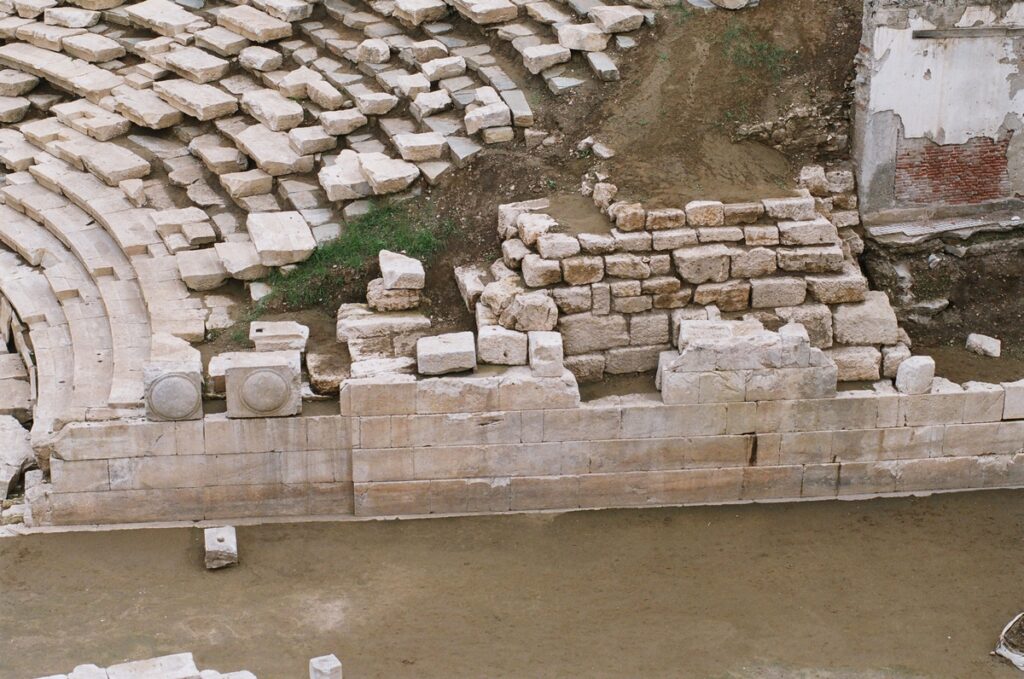
In the 4th century, the cities of Thessaly formed a political-economic federal state, called the “Common of Thessaly” and headquartered in Larissa. Under Roman rule, both the city itself and the whole of Thessaly obtained numerous privileges. Following the Octavian Augustus, who was a protector of the city, it suffered a gradual decline, until it became an insignificant city of the Roman Empire.
Read also via Greek News Agenda: Delphi: the navel of the ancient world; Ancient Olympia: Panhellenic Sanctuary and home of the Olympics; Delos, the Sacred Island; Temple of Apollo Epicurius at Bassae
N.M. (Translated from an original article in Punto Grecia)
TAGS: ARCHEOLOGY | ARTS | TOURISM

